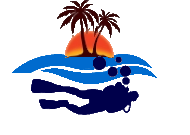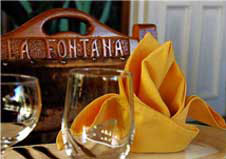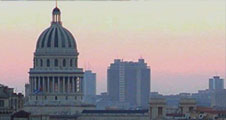The Canarian Diaspora Legacy
By: Ángela Oramas Camero | Source: CUBARTE | 09 de August 2009
We will never know the exact number of people from the Canary Islands, the Canarians, who migrated to Cuba. It is said that most who settled in the “Key of the New World” up to the 19th Century came from all regions of Spain.
The Galicians surpassed them in number after this century, until, approximately 1930.
The seven Islands named “Las Afortunadas” -The Lucky Islands- were a huge contribution to the historic and cultural heritage of the Cuban nation.
Thousands and thousands of the Spaniards who settled in Cuba could never save enough money to pay for a ticket to return to their motherland, much less as a successful aborigine conqueror. That´s why, in the Cuban cementeries lie the remains of numerous people coming from these islands.
Presumably, the first Canarians migration to Cuba, goes back to the discovery of the New World, when Admiral Christopher Columbus was forced to stop in the Canary Islands with its three ships named “La Pinta”, “La Nina” and “La Santamaria”, taking, as slaves, some of the Canary Islanders.
If we were to prove this hypothesis, the Canarians would be among the first ones, from the Old World, who went, for the first time, into Cuban land st, on the night of October 27, 1492.
At the beginning of the Spanish Colonization, we found a strong Canarian presence in Cuba, which was increased when the Spanish monarch ordered, in 1678, the Tributo de Sangre (Blood Tribute), with the purpose of inhabiting the conquered territories in the Caribbean region.
This regulation consisted in sending to Cuba five Canary families per each one-hundred tons of goods that was exported to America from the Canary Islands.
The Canarians who migrated to Cuba brought their faith on the Virgins of El Rosario and La Candelaria, and founded numerous towns, while they irrigated, with their sweat, the tills of the tobbaco and the sugar cane plantations.
A curious fact shows us Dona Isabel de Bobadilla, daughter of the Gomera´s Count, as the only woman who has governed in Cuba in a provitional way, when her husband, Hernando de Soto, Cuban Governor in 1539, sailed from Havana´s port and went to Florida in search of The Fountain of Youth, dying there of yellow fever, a disease transmitted by the Aedes Aegypty and other mosquitos. He died reflecting the Mississippi´s Jungle in his eyes.
It is said that Isabel, hoplessly, scanned the sea horizon, waiting for her lover´s return. Tired of waiting in vain, she arranged her things and came back to the Canary Islands.
Some time later the legend of the female ghost who appeared on top of the old fortress or wandered along the coast arouse.
The legend was taken in serious when, on top of the Royal Fortress a wind vane was installed and the passers-by thought that the statuette perpetuated the memory of Dona Isabel when, in fact, it was only a replica of the Seville Giraldilla.
Time went by and today that bronze statue has become one of the most important symbols of the City of Havana, and its figure has even be stamped in the Cuban Ron bottle´s labels and in other souvenirs.
The second most important symbol of the Cuban nation, after the Giraldilla, is the statue of the Galician “El Caballero de Paris.”
Among the different ethnias existing in Cuba, there is a strong influence of the Canarian genes, whose origins go back to the foundation of the seven Cuban towns, when both, Canarians and Cubans, made couples and had children half Cuban and half Canarian. To this adds the contributions made by the Canarians in the foundation of different towns, in spite that just a few of them kept a nobility title.
By chance, we found the first one who acquired his title in 1770. His name was the Marquis of San Felipe and Santiago de Bejucal, successor to the Marquis with Senorio and Justicial de Bejucal, son of the first Marquise Rosa Maria Perez de los Reyes, born in Tenerife.
The second one was the Count of San Juan de Jaruco, also in 1770, who, like his wife, came from the Santa Cruz family, and moved to La Palma in 1525.
The town of Bejucal, located to the Western part of the City of Havana, was founded on May 9, 1714, under the auspices of Saint Philip and the virgin of La Candelaria.
In brief, we will mention other towns founded by Canarian families in areas where there were big tobacco and sugar cane plantations, or next to ports where numerous Canary Islanders disembarked.
By the Blood Tribute, some thirty-six families founded the town of Matanzas, on October 12, 1693. Then, on that same date, followed Guines, where many Canarians settled at the begining of the 16th Century and Jesus del Monte, having a strong presence of these inhabitants from 1689 due to the abundant tabbaco plantations in that territory, including the seats of tobacco farmers tenants.
To this list join the towns of Camajuani, founded on January 1st, 1879 and Caibarien, in 1883, whose port served as the entry point of a large number of Canarians.
Other groups entered in Cuba by Caibarien and Vueltas.
In Placetas and since 1879, existed an impressive Canarian presence, which increased in the successive years.
Nevertheless, Cabaiguan was the town chosen to be the capital of the Canarians in Cuba. Its church´s baptism record books register the honorary titles spontaneously granted by its first inhabitants.
In Santiago de Compostela de las Vegas, or simply, Santiago de las Vegas, also founded by the Canarians, since 1683 this population had tobbaco plantations in homesteads lands, which were next to Zocalo Hondo, Bejucal and Managua.
In the meantime, it grew their popularity of being the best tobbaco planters par excellence.
It is true that among the first Spaniards who learnt about tobbaco plantations with the aborigines from La Habana province, was the Canarian Demetrio Pola, in 1541. Since then, the Canarian emigrants were considered excelent Vegueros, the name given to small farmers that specialized in planting tobacco .
We cannot write the story without mentioning the fights of the tobbaco planters on behalf of the workers´ rights and against the outrages of the the Spanish Government, without disregarding the important role played by the Canarians during the first peasant´s uprising held in Cuba, where some died or were even hanged up.
The heroic fights carried out by the tobbaco planters forced the metropoli and the King to allow the free sailing of the tobbaco they planted.
The Canarian presence in Cuba increased during the second half of the 17th Century, and even more along the 18th Century.
The Canarian diaspora continued growing throughout the 19th Century, especially as a substitute of the slave labor who worked in the sugar cane plantations. By the second half of this, it is estimated that between fifty and sixty thousand Canarians, coming from Tenerife, did so.
The Canarian emigrates created different associations and lyceums, while they kept on enhancing the number of inhabitants in Cuba, basically during the 19th Century, up to, approximately, 1930, almost as equal in number as the Galicians.
According to the census´ figures, in Cuba there is a strong Canarian influence that has enriched the nation´s customs and cultural manifestations, such as the country music, Literature and the kitchen art.
It was a Canarian named Silvestre de Balboa, the author of the epic poem “Espejo de Paciencia”, the first literary work of the Cuban Creole culture, donated to Cuba.
We could neither forget the contributions made by hundreds of Canarians during the Cuban War of Independence. Forty-one percent of the Spaniards who fought with the mambises, the name given to the Cuban independence fighters in the wars against Spanish colonial rule reached that figure in the 1895 War came from the Canary Islands, and 42.24 percent of Spaniards fell in combat during this belic conflict for the Cuban liberation.
Four Canarians won the rank of General the Liberation Army. Their names were: Manuel Suarez Delgado, Matias Vega Aleman, Julian Santana and Jacinto Hernandez Vargas.
The Major General Major Manuel Suarez Delgado, born on June 20, 1836, in Tenerife joined, in La Habana, the Cuban patriots and, in El Louvre sidewalk he met Julio Sanguily, who would later became General of the Cuban Liberation Army.
The Canarian Suarez Delgado took part in the two Independent Wars, that one of 1868, and the other that took place in 1895. He was a member of the commanding unit of the Third Army Corps.
During the neocolonial period he left for the province of Camaguey, where he died on January 3, 1917.
During the neocolonial period that goes from 1902-1959, the Canarians had an active participation in the social, political and economic spheres, and even fell in combat, on behalf of Cuban justice and welfare.
The first war for Cuban sovereignty, between 1868-1878, was initiated by a Canarian descendant, by mother´s side. His name was Carlos Manuel de Cespedez y Lopez del Castillo, known among Cubans by The Father of the Motherland, and that one of 1895 by Jose Marti Perez, son of Leonor Perez, originally from Tenerife.
On January 1st, 1959 took place the Cuban Revolution, led by Fidel Castro Ruz, who also carries Canarian blood in his veins, by his mother´s side.
In the Golden Book of the “Leonor Perez” Canarian Association, Fidel wrote:
“The Canarian is, par exellence, the most humble of all immigrants. He did not come to Cuba to conquer and exploit us. He came to Cuba to work and fight with us, he helped us to develop the country, he suffered with us, he fought with us, he founded a family and dignified himself, with our people, in the free and revolutionary Cuba we have today.
Even more, he made important contributions to the Cuban idiosincrasy.
From the Canarians, our peasants took their sense of honor, and also their rebelious nature. Still at present, these values help us to keep on fighting and win important battles.
I´ve always believed -and still believe- that the hermandad entre the Canary Islands and Cuba not only has a great past, but also a future.
Fraternally,
Fidel Castro Ruz
P.D. On my mother side, I carry with honor a percentage of blood from the “islands”.
The Spanish massive migration to Cuba diminished in the 1930´s, when the Cuban law of Nationalization of Work , or the 50 Percent Law was enacted. That law established the forceful contracting of Cuban native nationals to be no less than 50 percent of the workers and employees.
That´s why, many Spaniards became Cuban citizens, and those who did not agreed applying for citizenship, were sent to their motherlands.
In the meantime, the main destination of Spanish emigrees was shifted to other Latin American nations, especially towards Argentina.
Translation: Roxana Marquez Herrera (Cubarte)























